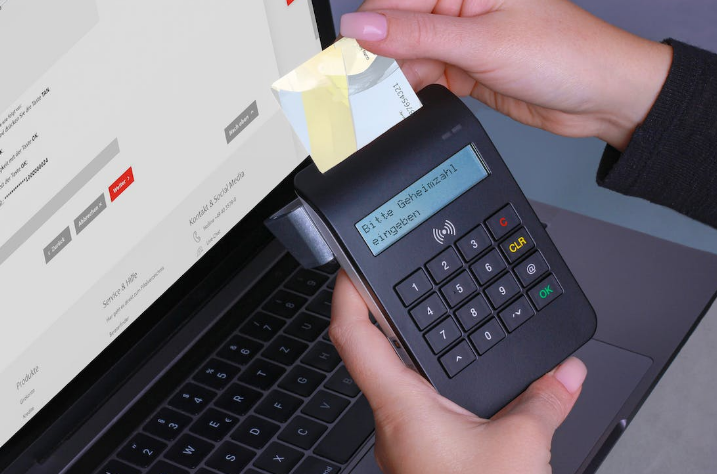Introduction
In an increasingly digital world, Quick Response (QR) codes have emerged as a powerful and versatile tool for connecting the physical and digital realms. Originally designed for tracking parts in the automotive industry, QR codes have evolved to become a ubiquitous feature in various fields, from marketing and advertising to contactless payments and information sharing. We’ll explore the process of generating QR codes and delve into the exciting realm of create custom qr code tailored to your specific needs.
Understanding QR Code Generation
Generating a QR code involves the creation of a two-dimensional barcode that stores information both horizontally and vertically. QR codes consist of black squares arranged on a white square grid, forming a unique pattern. The information encoded in a QR code can range from simple text and URLs to more complex data such as contact information, Wi-Fi credentials, or business card details.
The process of generating QR codes has become incredibly accessible with the advent of online tools and software applications known as QR code generators. These tools simplify the creation of QR codes, allowing users to encode information and customize the appearance of the code to suit their preferences.
Steps to Generate a Standard QR Code
Creating a standard QR code is a straightforward process that typically involves the following steps:
Choose a QR Code Generator: Start by selecting a reliable QR code generator. Numerous online tools and software applications are available, offering a range of features and customization options. Popular choices include QR Code Generator, QRStuff, and QR Code Monkey. Choose a generator that aligns with your specific needs and preferences.
Select the Type of Content: Determine the type of information you want your QR code to convey. QR codes can encode various content types, including URLs, text, email addresses, phone numbers, and more. Select the appropriate content type in the generator.
Enter the Content: Input the specific information you want to encode. For example, if you’re creating a QR code for a website, enter the URL. If it’s for text, type the desired message. Some generators also allow you to add business card details, location coordinates, or Wi-Fi credentials.
Customize the Design (Optional): While standard QR codes are typically black and white, some generators offer limited customization options. You may be able to change the color of the code or add a logo to the center. However, keep in mind that extensive customization may affect the QR code’s scannability.
Generate and Download: After entering the content and, if desired, customizing the design, proceed to generate the QR code. Once generated, you can usually download the QR code in your preferred format, such as PNG or SVG.
Creating Custom QR Codes
While standard QR codes serve their purpose efficiently, the ability to create custom QR codes adds an extra layer of personalization and creativity. Customization allows you to incorporate brand elements, add logos, change colors, and experiment with design while maintaining the code’s functionality. Here’s a step-by-step guide on how to create your own custom QR code:
Choose an Advanced QR Code Generator: To create custom QR codes, opt for a QR code generator that offers advanced customization features. Some generators provide options for changing the color of the QR code, adding a logo, adjusting the shape, and more. QR Code Generator, QRStuff, and QR Code Monkey are good starting points.
Select the Type of Content: Similar to creating a standard QR code, determine the type of information you want to encode and select the appropriate content type in the generator.
Enter the Content: Input the specific information you want to encode, whether it’s a URL, text, contact details, or any other type of data.
Explore Customization Options: Advanced QR code generators offer a range of customization options. Explore features such as changing the color of the QR code, adding a logo or image in the center, adjusting the shape, and incorporating gradient effects.
Maintain Contrast: One of the key considerations in customizing QR codes is maintaining sufficient contrast between the code and its background. This ensures that the code remains easily scannable. If you choose to use a dark color for the QR code, make sure the background is light, and vice versa.
Add a Logo or Image: Adding a logo or image to the center of the QR code is a popular customization option. This feature is especially useful for businesses looking to brand their QR codes. Ensure that the logo or image doesn’t compromise the essential pattern of the QR code, and test its scannability after customization.
Adjust Size and Shape: While customization allows for creativity, it’s crucial to maintain a balance between design elements and functionality. Avoid making the QR code too small, as this can affect its scannability. Aim for a size that is easily recognizable, typically around 2 x 2 cm or larger.
Test the QR Code: Before finalizing your design, test the QR code on various devices and with different QR code scanners. This step ensures that your customized QR code is functional and readable across a broad range of devices.
Download and Share: Once satisfied with your customized QR code, download it in your preferred format, such as PNG or SVG. You can then share or embed the QR code in various materials, including business cards, posters, websites, or promotional materials.
Creative Uses of Custom QR Codes
The ability to customize QR codes opens up a myriad of creative possibilities for individuals and businesses. Here are some innovative ways to leverage custom QR codes:
Branding and Marketing: Businesses can incorporate their logo and brand colors into QR codes to create a cohesive and visually appealing marketing strategy. Custom QR codes on promotional materials, packaging, and advertisements can enhance brand recognition and engagement.
Event Invitations and Tickets: Create personalized QR codes for event invitations or tickets. Customize the design to match the theme of the event, and include essential details encoded in the QR code for easy access.
Product Packaging: Embed custom QR codes on product packaging to provide customers with instant access to product information, user manuals, or promotional content. This adds an interactive element to the product experience.
Interactive Business Cards: Infuse creativity into your business cards by incorporating a custom QR code. This code can link to your portfolio, LinkedIn profile, or personal website, providing a dynamic and memorable way for contacts to connect with you.
Educational Materials: For educators and trainers, custom QR codes can be embedded in textbooks, presentations, or printed materials to provide students with supplementary resources, videos, or interactive content.
Art and Design Projects: Artists and designers can use QR codes as a medium for creativity. Incorporate custom QR codes into art installations, posters, or interactive exhibits to engage audiences and provide additional layers of information.
Social Media Integration: Custom QR codes can link directly to your social media profiles, making it easy for people to connect with you online. Add a custom touch to these QR codes to align them with your social media branding.
Restaurant Menus: In the era of touchless dining, restaurants can utilize custom QR codes on menus. Customers can scan the code to view the menu on their smartphones, reducing physical contact with printed menus.
Best Practices for Custom QR Codes
While customizing QR codes provides a canvas for creativity, it’s essential to adhere to best practices to ensure functionality and readability. Here are some tips for creating effective generate qr codes:
Test Across Devices: QR code readability can vary across different devices and QR code scanning apps. Test your custom QR code on various smartphones and scanners to ensure broad compatibility.
Maintain Sufficient Size: Avoid creating QR codes that are too small, as this can impact their scannability. Ensure that the QR code is at least 2 x 2 cm to guarantee readability.
Choose the Right Colors: While customization allows for creativity, it’s important to select colors wisely. Dark colors on a light background or vice versa tend to work best. Ensure that the QR code’s contrast remains intact after customization.
Avoid Overcrowding: If you’re including a logo or additional design elements, be cautious not to overcrowd the QR code. Maintain a balance between customization and simplicity to guarantee optimal performance.
Consider the Environment: When using custom QR codes in physical spaces, consider the environment where they will be scanned. Ensure proper lighting and contrast to facilitate easy scanning.
Conclusion
Generating QR codes has become an accessible and user-friendly process, allowing individuals and businesses to seamlessly bridge the physical and digital worlds. Standard QR codes serve their purpose efficiently, but the ability to create custom QR codes introduces a level of personalization and branding that enhances their impact.
As you embark on your journey to generate and customize QR codes, keep in mind the delicate balance between design creativity and functionality. Whether you’re aiming to strengthen your brand presence, engage your audience, or provide innovative solutions, custom QR codes offer a versatile and dynamic tool to achieve your objectives.
The world of QR codes is continually evolving, and the possibilities for creative expression and practical application are virtually endless. Embrace the power of custom QR codes to unlock new realms of connectivity and engagement in our ever-expanding digital landscape.



